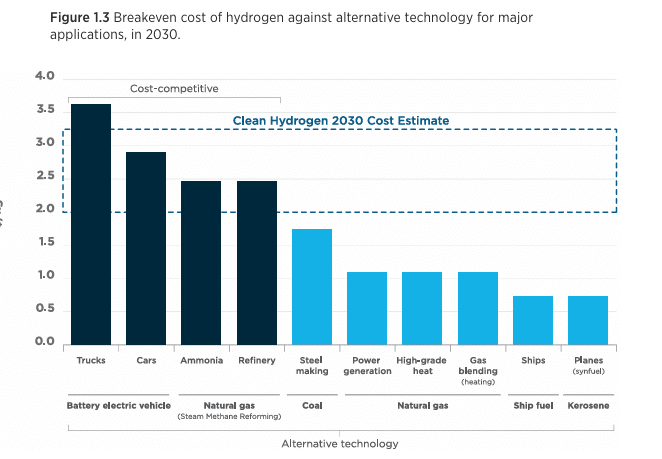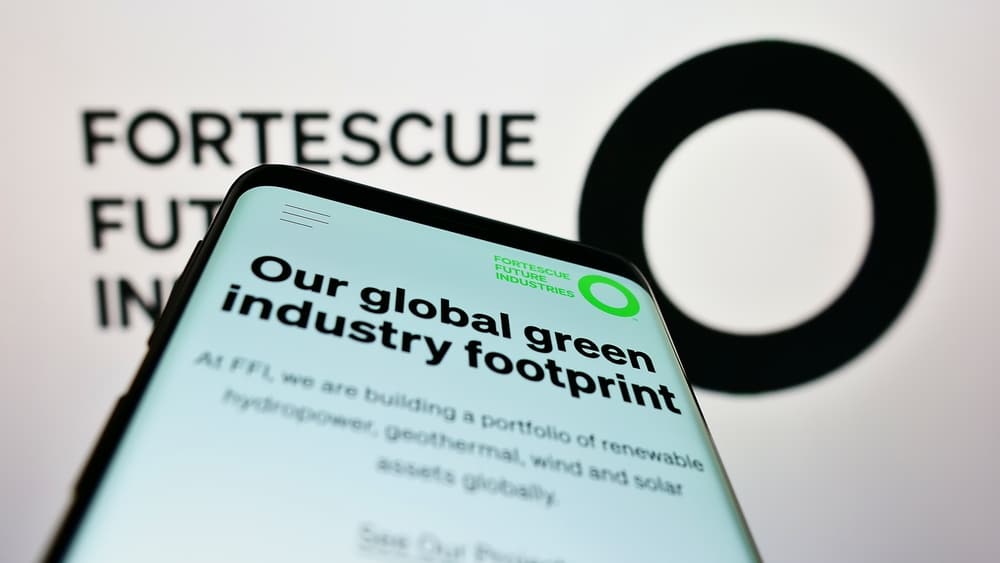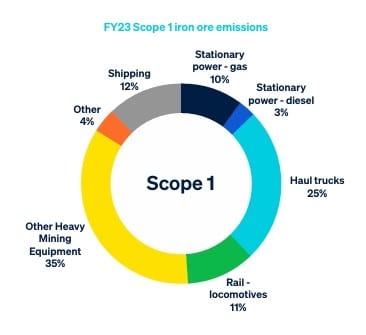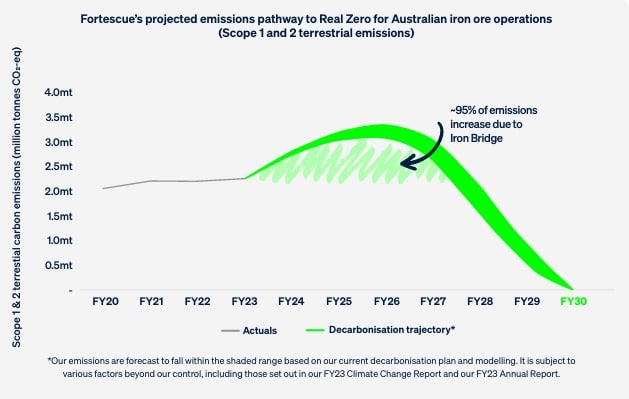Fortescue has launched its Green Metal Project in Pilbara, Western Australia. This US$50 million initiative, situated within the Green Energy Hub at Christmas Creek, aims to produce over 1,500 tons of green metal annually. With the first output expected in 2025, this project marks a significant advancement in the green hydrogen space.
Fortescue’s Hydrogen Plant: A Step Towards Decarbonizing Mining
The iron and steel industry are extremely difficult to decarbonize, but the green mining leader is making groundbreaking efforts to reduce emissions in this sector.
Fortescue Executive Chairman Dr Andrew Forrest said,
“Today is a celebration of innovation, collaboration, and stretch targets, and marks a pivotal moment in Fortescue’s journey to build a green metal supply chain. Iron and steel are the backbone of our infrastructure; however, traditional iron and steel production processes are among the largest sources of greenhouse gas emissions.”
So, what is this green metal?
They have defined green metal as the “end product resulting from processing iron ore into iron, using renewable energy and with near zero carbon emissions.”
Dr. Forrest also elaborated that the company’s current milestone marks the integration of green mining, large-scale renewable power, and green hydrogen to produce green metal. He thinks this is a rare opportunity to create a green supply chain and Fortescue is steading fast to take advantage of it.
The company’s newly installed green hydrogen refueling station received a major boost of a $2 million grant from the Western Australian Government’s Renewable Hydrogen Fund. No wonder it is leading the green revolution, having enormous green hydrogen capacity.
Notably, this plant can produce up to 530 kg of H2 gas daily, equating to 195 tons annually. It is partly powered by solar energy and can serve a fleet of 10 hydrogen-powered coaches. Speaking of their latest advancements, they have completed the largest combined gaseous and liquid hydrogen plant on any Australian mine site.
The Green Energy Hub
Green hydrogen plays a crucial role in reducing mining emissions. It powers everything from buses to heavy equipment like haul trucks and excavators.
The Green Energy Hub features a hydrogen liquefaction facility, liquid hydrogen storage, and a liquid hydrogen refueling station. These are essential components in Fortescue’s broader decarbonization efforts, which also include zero-emission prototypes.
Fortescue Hydrogen Systems (FHS)
The company wants a shift from fossil fuels by using renewable energy to create cutting-edge hydrogen production systems for any application. Their portfolio includes a wide range of electrolyzer products, systems, and services, featuring advanced technologies and membrane innovations. Fortescue’s hallmark PEM Electrolyzers use a High-Pressure Proton Exchange Membrane (HP PEM) as the core technology.
For hydrogen solutions, they have FHS P50 that delivers 24,000 kg/day of high-quality, pressurized hydrogen through a modular but industrial-scale design. The other prototypes are FHS P1 and P5. They offer compact hydrogen solutions of capacity 480 to 2,400 kg/day of high-grade hydrogen.
Fortescue’s Emissions Reduction Targets and Strategy
The company is committed to achieving real zero Scope 1 and 2 emissions across its Australian iron ore operations by 2030. It is working towards having the targets verified by the SBTi for the current financial year. For Scope 3 emissions, Fortescue aims to decarbonize the steelmaking process, shipping, and upstream emissions by 2040.
source: Fortescue
- Scope 1 and 2 Emissions: In FY23, Fortescue’s total gross Scope 1 and 2 emissions from Australian iron ore operations and marine vessels were 2.55 mtCO2e. Scope 1 emissions were 2.2 million tons, while Scope 2 emissions from power purchases were 0.35 million tons.
- Scope 3 Emissions: Fortescue’s Scope 3 emissions reached 267.61 mtCO2e in FY23, marking a 5% increase from FY22 due to a rise in iron ore shipments.
Since FY19, its RE use in Pilbara has grown from less than 1 gigawatt hour (GWh) to 144 GWh in FY23, with a 58.9 GWh increase since FY22. Today, renewable energy accounts for 20% of the energy purchased for Pilbara operations.
The company’s climate change strategy is focused on three key areas:
- Implementing in-house and collaborative solutions to reduce emissions within their iron-ore operations.
- Providing technology solutions to address emissions across their value chains.
- Driving the development of renewable energy and green hydrogen to support global decarbonization efforts.
source: Fortescue
Fortescue Metals Chief Executive Officer, Dino Otranto
“On decarbonization, we remain firmly committed to our target of Real Zero by 2030, without voluntary carbon offsets. Our hydrogen-powered haul truck prototype also operated on hydrogen for the first time and will soon be transported to our Christmas Creek site to undergo site-based commissioning and testing.”
Western Australia: The Green Hydrogen Hotspot
Australia leads the world in renewable hydrogen projects. We dug into a report in Hydrogen Insight and discovered that last year the Australian Government announced a subsidy of US$1.35bn to ramp up domestic green hydrogen supply.
They named it the “Hydrogen Headstart Program”. It aims to bridge the commercial gap for early-stage projects, positioning Australia as a global leader in hydrogen production and export.
Moreover, Western Australia (WA) is ideally positioned to produce, use, and export renewable hydrogen. It has abundant renewable energy resources, a robust energy industry, and proximity to major international markets. These advantages make it a top choice for hydrogen investors and companies.
Here’s a report from Australia’s National Hydrogen Strategy

Western Australia’s Premier, Roger Cook, hailed the plant as a crucial step in emerging as a global leader in clean energy and green iron production. Thus, we can conclude that Fortescue’s new plant is truly revolutionary. It produces both gaseous and liquid hydrogen, that can power the company’s mining prototypes and coach fleet at Christmas Creek.




